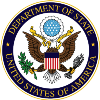The Importance of U.S. Arctic Leadership
By: U.S. Special Representative for the Arctic Robert J. Papp, Jr.
A year ago, the United States assumed leadership of the Arctic Council, the high-level forum in which the eight Arctic States and the region’s indigenous groups discuss circumpolar issues.
As we approach the halfway mark of our two-year Chairmanship, we have much to celebrate: last month the 2013 agreement on Arctic oil pollution, preparedness, and response went into effect, ensuring strong cooperation among the Arctic States in the event of an oil emergency in Arctic waters. Through the newly-established Arctic Coast Guard Forum, we conducted an initial exercise of the 2011 Search and Rescue agreement, and a full-scale operational demonstration will follow this summer. The Arctic Council recently released groundbreaking procedures for the safe operation of unmanned aircraft systems in the Arctic, the first international guidelines that include protocols for the use of these aircraft across an entire region. The U.S. government is also sponsoring the Fulbright Arctic Initiative where 17 scholars from across the Arctic take part in a new 18-month study program supporting cutting-edge research on energy, water, health, and infrastructure issues.
Reaffirming the U.S. Arctic Identity
Americans living in Alaska understand the Arctic’s impact on our nation. However, others may not fully appreciate our country’s Arctic personality. Initiatives such as the August 2015 GLACIER conference, a highlight of President Obama’s historic visit to Alaska and the U.S. Arctic, have been critical in bringing the Arctic to the attention of those living in “lower 49” States. As a demonstration of the Administration’s continuing commitment to the region, the White House will sponsor later this year an Arctic Science Ministerial, convening key leaders to advance Arctic science and research.
We’ve also launched our own Medium blog, “Our Arctic Nation,” that each week features different American voices from different U.S. States, exploring the Arctic’s direct relationship to their communities. We are further shining a spotlight on the amazing young people who live in the Arctic through the Arctic Youth Ambassadors program — a joint project of the U.S. Fish & Wildlife Service, Alaska Geographic, and the Department of State. The program provides 22 Alaskan students a platform to share with the world their experiences of living at the top of the globe. One of our Youth Ambassadors, Bryon Nicholai, has become a YouTube sensation for his promotion of Yup’ik language and song and was recently featured on NPR’s Weekend Edition. We are promoting these powerful voices because their thoughts and experiences will shape the international community’s view of the Arctic, while highlighting the obstacles and opportunities facing the region.
Launching New Initiatives with Long-Term Impacts
As the Arctic’s landscapes shifts, we need novel ideas to address the new needs emerging in the region. For example, we’re working closely with our Arctic partners to conduct an assessment of the region’s telecommunications infrastructure to better understand where significant connectivity gaps are affecting communities. Also, through the Arctic Remote Energy Networks Academy, the Arctic Energy Summit, and the new Arctic Renewable Energy Atlas, we’re driving conversations on sustainable-energy generation in the Arctic. In the realm of health, we are also sponsoring the Arctic One Health project that uses a holistic approach — considering human, animal, plant, and environmental factors — to identify health risks threatening the region.
Ensuring the Legacy of the Arctic Council
Finally, we are committed to bolstering the Arctic Council, which this year celebrates its 20th anniversary. To ensure that the Council remains a vibrant forum for the next 20 years and beyond, we are working to strengthen the Council by promoting long-term strategic planning, undertaking a comprehensive financial review, and facilitating the meaningful engagement of observers.
When we pass the gavel of the Arctic Council to Finland at the May 2017 Ministerial meeting in Fairbanks, Alaska, we expect that the Council will be well positioned to continue it important sustainable development and environmental work, continuing to foster peace and cooperation across the region.
This blog also appears on DipNote, the State Department’s official blog.
